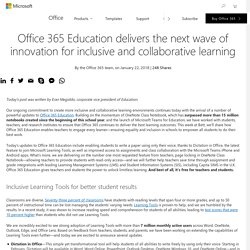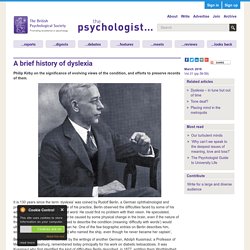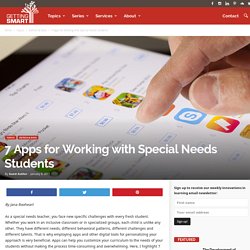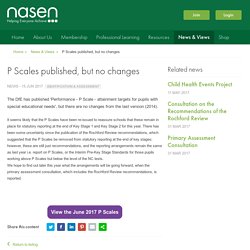

Special Educational Needs Resources Blog – Advice, learning activities and recommended toys, books and resources for children with SEN. Tilt Brush by Google. Microsoft Font Maker [Windows 10 Review]: Handwritten custom fonts. Windows 10 has always made it easy to install different fonts, but now you can easily create your own fonts out of your handwriting.
![Microsoft Font Maker [Windows 10 Review]: Handwritten custom fonts](http://cdn.pearltrees.com/s/pic/th/microsoft-windows-handwritten-210421629)
All you need to do is download the Microsoft Font Maker app and write some characters and sentences using a stylus. The app is free on Windows 10. It's important to remember that this app requires a stylus. There seem to be a lot of negative ratings for the app in the Microsoft Store and my guess is that people downloaded the app and then weren't able to do anything with it without a stylus and assumed it was broken. See in Microsoft Store A simple font creator Creating a font using Microsoft Font Maker couldn't be more straightforward. You can then save your font with whatever name you'd like. There are quite a few bad reviews in the Microsoft Store about the app not detecting any input. A versatile creative tool Microsoft Font Maker is a versatile tool. Boardmaker - The power to achieve. AAC Games and Communication Resources (Autism and Interaction Games)
This page collates all the games and resources I have made/found to enhance the communication opportunities for all students but specially designed for AAC (Augmentative and alternative communication) users.

This may be PECS (Picture exchange communication system) or Context specific boards for those students who have more speech. All are free but some will require software to edit. If you click any of the links and buy a product we will earn a little bit of money that helps towards hosting costs. If you like this post please share it! All children deserve to have their communication needs met and a chance to use these with their peers. Speech and Language therapy. I am not a speech and language therapist but work in a specialist school where communication is our primary focus. StackPath. Redefine. Cat Lamin sur Twitter : "I spent the last four days working for Google at BETT, talking about accessibility. Check out this cool infographic based on my notes from the show. I’m so impressed with the accessibility features built in to Chrome OS and these.
365 Education delivers the next wave of innovation. Today’s post was written by Eran Megiddo, corporate vice president of Education.

Our ongoing commitment to create more inclusive and collaborative learning environments continues today with the arrival of a number of powerful updates to Office 365 Education. Building on the momentum of OneNote Class Notebook, which has surpassed more than 15 million notebooks created since the beginning of this school year, and the launch of Microsoft Teams for Education, we have worked with students, teachers, and research institutes to ensure that Office 365 continues to deliver the best learning outcomes.
This week at Bett, we’ll share how Office 365 Education enables teachers to engage every learner—ensuring equality and inclusion in schools to empower all students to do their best work. Inclusive Learning Tools for better student results Classrooms are diverse. 77001. A brief history of dyslexia. It is 130 years since the term ‘dyslexia’ was coined by Rudolf Berlin, a German ophthalmologist and professor in Stuttgart.

In the course of his practice, Berlin observed the difficulties faced by some of his adult patients in reading the printed word. He could find no problem with their vision. He speculated, therefore, that their difficulties must be caused by some physical change in the brain, even if the nature of this eluded him. The term Berlin used to describe the condition (meaning ‘difficulty with words’) would ultimately become more famous than he. One of the few biographic entries on Berlin describes him, somewhat poignantly, as ‘[the man] who named the ship, even though he never became her captain’, Berlin himself had been influenced by the writings of another German, Adolph Kussmaul, a Professor of Medicine at Strassburg, remembered today principally for his work on diabetic ketoacidosis. By the 1960s dyslexia was attracting the attention of UK researchers again. Professional HMDs and Virtual Reality Goggles.
VR & SEN. Supporting SEN with edtech. Posted by Hannah Vickers | February 13, 2017 | People #special-educational-needs#edtech#eye-gaze#virtual-reality#robotics#motion-sensor#leap-motion#children#ben-behrens#support For those looking to enhance the learning experience of children with Special Educational Needs, the technology sector offers an ever-expanding range of developments from everyday apps that can be played on an iPad, to stunning developments in VR and robotics.

Performance P Scale attainment targets for pupils with special educational needs June 2017. 30+ Educational Android Apps for Students with Special Needs. 7 Apps for Special Needs Students. By Jana Rooheart As a special needs teacher, you face new specific challenges with every fresh student.

Whether you work in an inclusive classroom or in specialized groups, each child is unlike any other. They have different needs, different behavioral patterns, different challenges and different talents. That is why employing apps and other digital tools for personalizing your approach is very beneficial. Apps can help you customize your curriculum to the needs of your students without making the process time-consuming and overwhelming. 1) Learn With Rufus (Social Cues, Basic Competencies) Compatibility: iOS and Android tablets. Disabled children final report 30.11.17. Updated Chart of The Best iPad Apps for Learners with Special Needs.
Special educational needs in England: January 2017. News - P Scales published, but no changes. The DfE has published 'Performance - P Scale - attainment targets for pupils with special educational needs', but there are no changes from the last version (2014).

It seems likely that the P Scales have been re-issued to reassure schools that these remain in place for statutory reporting at the end of Key Stage 1 and Key Stage 2 for this year. There has been some uncertainty since the publication of the Rochford Review recommendations, which suggested that the P Scales be removed from statutory reporting at the end of key stages; however, these are still just recommendations, and the reporting arrangements remain the same as last year i.e. report on P Scales, or the Interim Pre-Key Stage Standards for those pupils working above P Scales but below the level of the NC tests.
We hope to find out later this year what the arrangements will be going forward, when the primary assessment consultation, which includes the Rochford Review recommendations, is reported. News - P Scales published, but no changes.